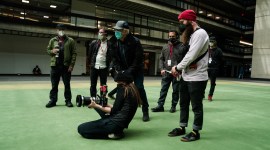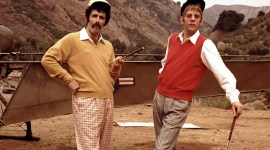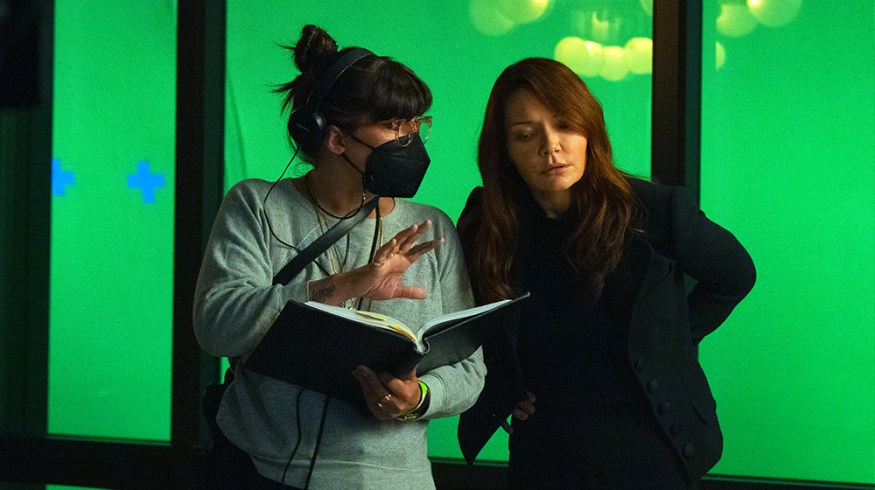
A Closer Look at Ozark with Director Amanda Marsalis
We sit down with Amanda Marsalis, director of Ozark, to chat about her transition from indie film to television, working with Ava DuVernay, and how to make space for actors to deliver truly incredible performances.
Director Amanda Marsalis started her career with the independent feature Echo Park. She has since pivoted to a vibrant career as a television director, including helming episodes of Queen Sugar, The Umbrella Academy, and six episodes of the dark, chilling crime drama Ozark.
There seems to be an exodus of indie filmmakers from features to the streaming landscape of TV. For example, Moonlight‘s Barry Jenkins directed the entire slate of The Underground Railroad, The Piano’s Jane Campion turned to Netflix for Power of the Dog, and the episodic Top of the Lake series. Is it simply that the best storytelling is happening on the small screen, or are there other considerations?
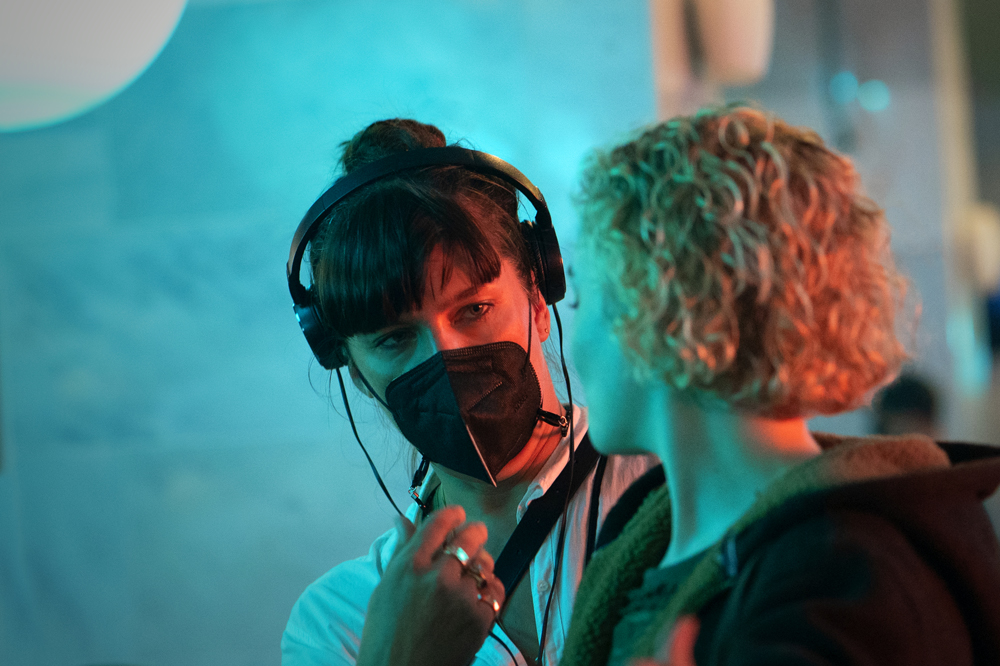
PremiumBeat spoke with Marsalis about the transition from the big screen to the small screen, the role the television director plays in the process, and the creative work involved in creating some of the best content in what might arguably be the greatest storytelling era since the golden age of television.
How did you go from the intimate feature filmmaking of Echo Park into the Ava DuVernay TV dynasty world? Was it your plan to actively pursue television work or did it simply flow out of relationships and opportunity?
AM: I did not have a plan. I didn’t even have a plan to direct that first film! It was a bit of a miracle. I was suggested by a friend to the producers of Echo Park, who already had a script and the very small budget funded. We made the film in fifteen days in LA. My friends helped. My furniture was moved out of my house and put in the film.
That kind of thing. Ava had just started ARRAY, and Echo Park was one of the first films distributed under the title. The first season of Queen Sugar was being filmed, and I knew Ava was hiring first-time TV directors who had made features.
I asked Ava if she would consider me for the second season. I visited the set at the end of season one, and over the holidays that year, she told me I would be getting an episode the next season. I knew my life was changed forever. I owe so much to Ava. Something about it, I just understood I would understand how to work in TV. I have loved working in television since my first episode.
You often hear that film is a director’s medium and television is a writer’s playground, but it’s hard to ignore that there has been a massive pivot of indie filmmakers to the small screen. Has the role of the director in television changed that makes it more artistically appealing to filmmakers?
AM: Honestly, I think directors like to work. Most of us need activity to stay anywhere close to sane. I think network TV can be called a writer’s medium, but there is a lot more TV now and a lot of great people making it.
Jason Bateman always made it clear he thought of Ozark as a director’s show. But I also thought that was only possible because it was so well written to begin with. It had such a clear vision from the writers that, as a director, you could come in and do your job well. It is all about finding the people you are inspired by and trusting. I love working in TV. But man, do I want to make another film so bad.
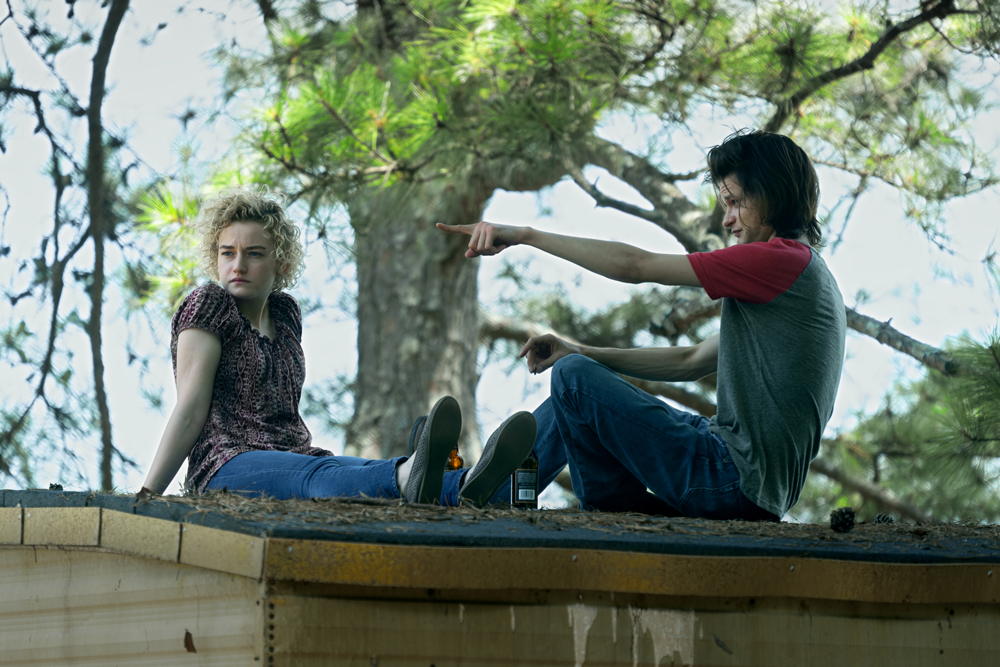
The first episode you directed for the Ozark team was the season finale of the second season. Talk about being handed the bat with the bases loaded.
AM: Ha! That is a perfect way to describe the experience. But Patrick Markey, Chris Mundy, and Jason all made sure I was supported and set me up for success. Laura Linney is the most generous and gracious actor. Before I was even up for the job, I had watched season 1 of the show. Then I had all the scripts for season 2.
I might have even seen some cuts of the earlier season 2 episodes by the time I started. The entire crew of Ozark loved making Ozark. So, working there was fun. A lot of people loved what they did and were proud of their work.
There are a lot of lessons I take with me to other shows, especially as a producer now. Patrick was a great producer to learn from. He cares deeply about the crew. I really miss everyone. I hired as many of the Ozark crew as I could get on my current show Kindred.
When you are working with such pros as Jason Bateman and Laura Linney, is it mostly a case of staying out of their way and focusing on the technical aspects of production, or do you have the opportunity to talk about their tactics and goals in the scene?
AM: Jason and Laura are very different actors. I might give them a lot less notes than anyone else but still, we had a lot of conversations about the scene work, the episodes, their character, and so on. We rehearse before each scene but don’t get a lot of prep.
Laura taught me the most about being the best director for actors I can be. She continuously does so. I think I have said “grateful” an embarrassing amount of times so far but it is how best to describe it.
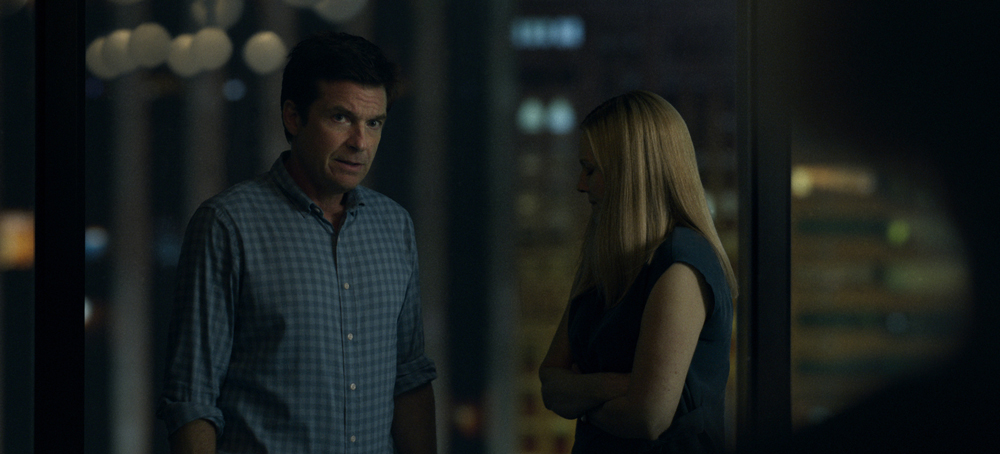
Spoiler warning! We are now discussing the plot, so those of you not caught up: get on and come back to the article!
Probably the most shocking scene you directed was Roy Petty’s death. What is your memory of directing that scene and the choices that were made?
AM: I have vivid memories of directing that scene. Armando Salas was the DP. I am such a fan of him and his work. It was a big deal to kill off Petty. He was a beloved actor on the show, and is still a friend of mine now.
A massive lightning storm hit in the middle of the day out of nowhere which meant we lost, I think, an hour and half of filming to waiting out the lighting hits. I remember standing inside talking about the plan about what we would do once we came out of the lighting hold in a huddle with Mundy and Armando and the producers. And I thought “oh shit, I’m one of the adults now” ha.
As far as which frames I shot when and when we used them in the cut…. I always credit it back to the writing. Reading Chris Mundy’s scripts the emotion is so clear, the motivation is so clear… deciding what your frames need to be feels easy with so many great tools to work with.
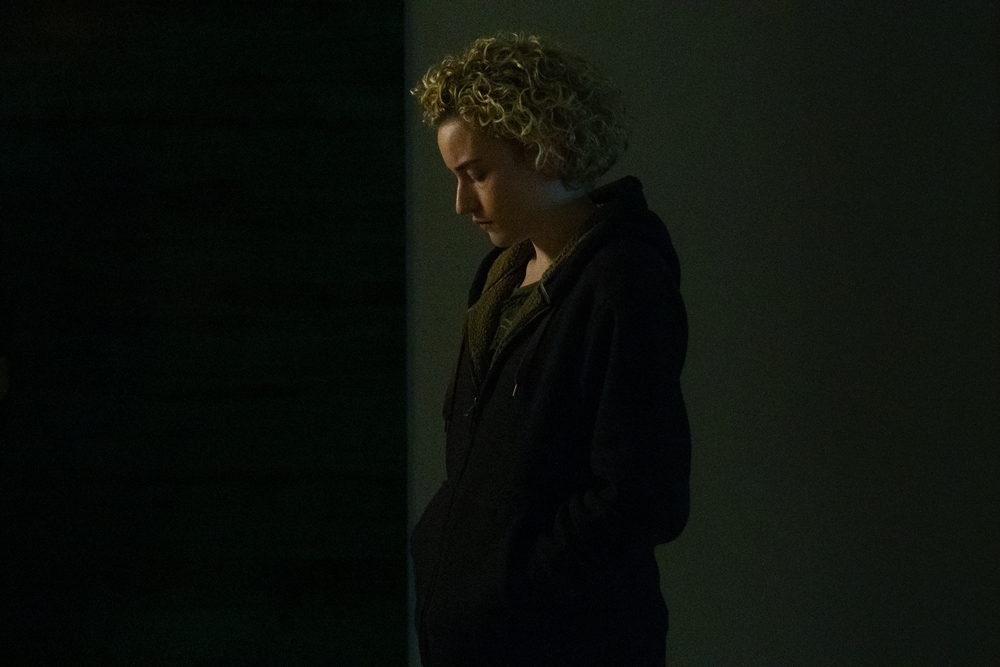
It may seem odd to describe a murder scene as gorgeous, but Javi’s murder is. What can you tell us about the choices you made in lenses, framing, lighting, and performance that contributed to it working so well? What were the discussions you had with the cast and crew that contributed to the power of that scene?
Ruth killing Javi is what “The Cousin of Death” is working toward the entire episode. She had fantasized about it. She had failed to do it. So this was it.
Something about the location and the timing of the episode just felt right to film as we did. I saw it on our first scout, and that’s how we filmed it. I give a lot of credit to Alfonso Herrera, who played Javi. He was great at getting shot!
That is a big part of that beautiful wide working so well. You believe he is really being shot, he goes down as bullets have hit him. Another actor might not physically have that talent, so you would need to design more coverage to make it feel real.
I also had a great A Camera op, Ari Issler, who I knew could get the shot. So many members of the Ozark cast and crew were so talented, so you could depend on them. If you had an idea they would help you bring it to life. Or death. Lots of death in Ozark.
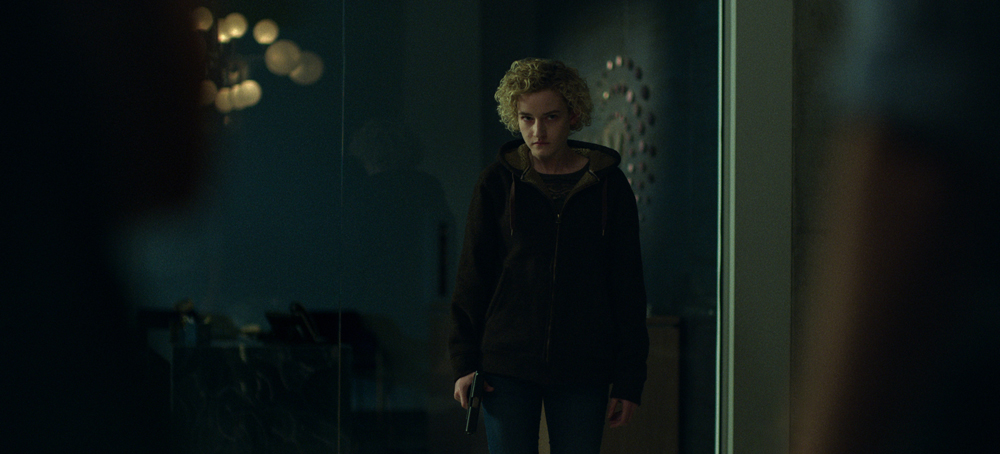
In Season 4, “Trouble the Water,” there’s the scene where Wendy begs Nathan not to take the children away. When you get such a pivotal scene such as this, how do you work on a shot list?
I had a very clear shooting plan for that scene. And honestly, I over-covered it. I think there is a set-up we didn’t use in the cut.
In such an emotional scene, it’s best to get set-ups to the minimum needed to tell the story. Protect your actor and their performance. On this day, I did not protect Laura as well as I should have. But she is such a tremendous actor you cannot tell on screen. She gives everything every take.
Since Ozark, you’ve stayed in television as both a director and producer. How has your directing experience helped you as a producer?
I would say producing has actually helped me as a director. I often talk about directing as being very math-y. So much planning has to go into making sure your day can have the time and space it needs to tell the story well. To give your actors the room they need. Your DP, the light at the right time of day. Or so on.
Producing is challenging but has allowed me to learn even more about how to set myself up for success as a director.
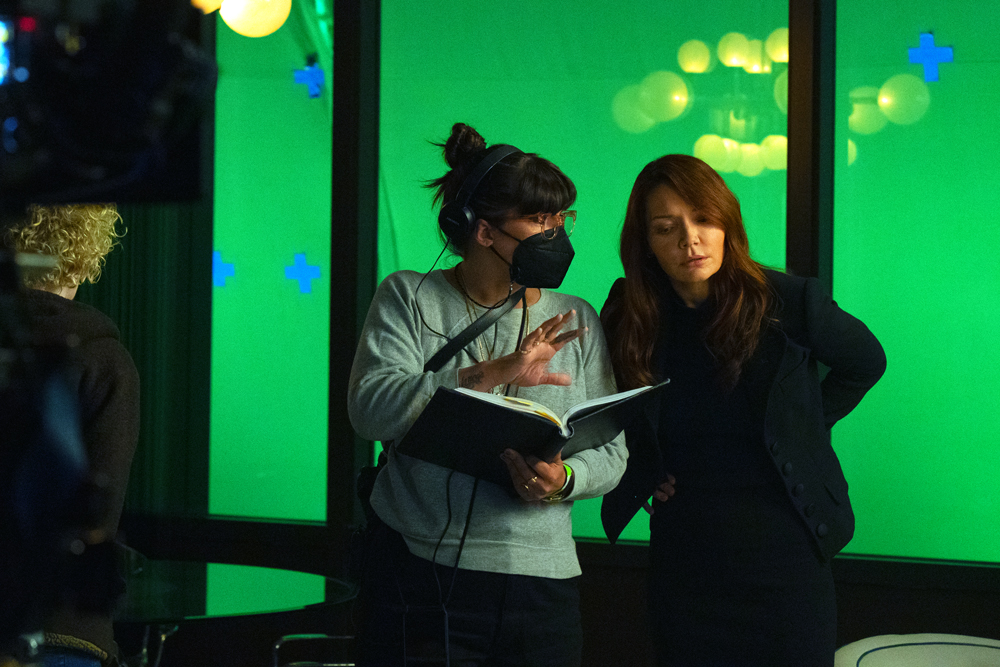
Finally, with so many feature directors turning their time and energy toward television, do you think post-pandemic, independent films will thrive? We’ve seen the massive success of large-budget filmmaking (Marvel films and the recent Top Gun sequel), but can the art house find its footing again with so many streaming services producing original content?
I really hope post-pandemic indie films will thrive. I have eternal hope. I hope I’ll be directing some of those films.
We are going to need art and storytelling more than ever with everything that is happening in the United States. The gutting of our essential rights. I want to be a director who helps fight against the conservative rage in any way I can.
I’ve always wanted to direct an erotic thriller. Somewhere out there is a film for me that is sexy and inspiring and will offend all the right people and inspire a lot more. That’s my mood late on a Sunday the weekend after Roe was overturned…
Want to hear more from some incredible filmmakers? Check out these articles below.
- Cinematographer Jessica Lee Gagné on Shooting Severance
- Laura Seay on Transitioning from Actor to Director
- An Interview with Motion Design Entrepreneur Ian Frederick
- An Interview with “Assassins” Cinematographer John Benam
- Industry Insights: An Interview with Composer Guillaume Roussel
- Interview: Casey Neistat on the Future of Creative Video Content


